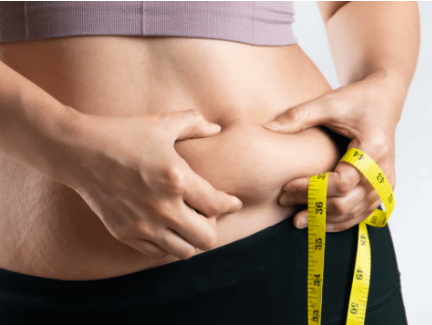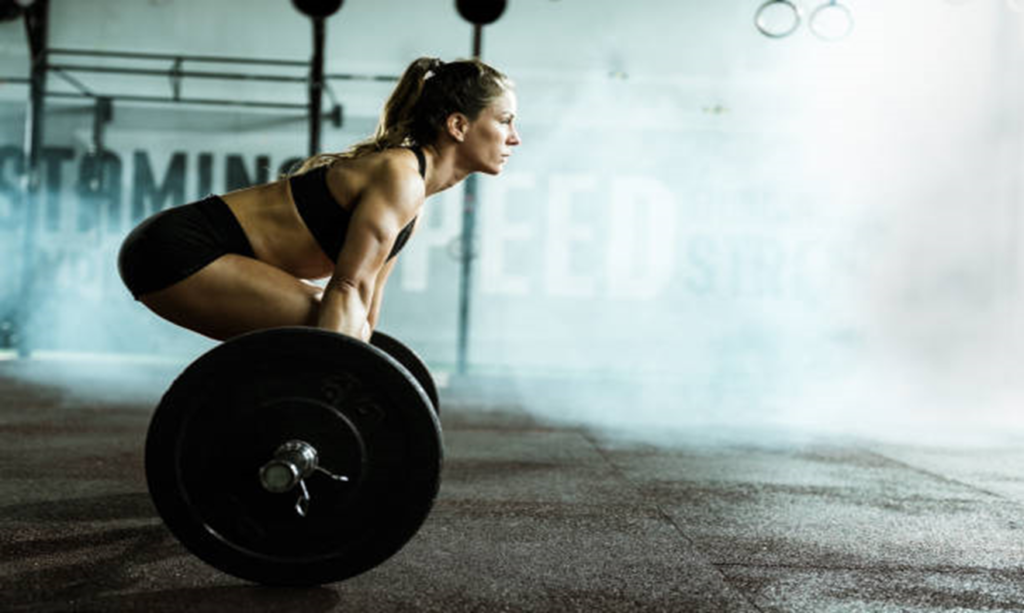According to the World Health Organization (1996) menopause is a significant life event characterized by reduction in the hormone estrogen. Females spend a significant portion of their lifespan in the postmenopausal state and the menopausal transition is associated with increased cardiovascular (CVS) risk and has significant side effects. Coaches and fitness professionals must be well informed and educated regarding the best approaches for exercise prescription for peri-menopausal and post- menopausal women. One size fits all approach doesn’t exist. Women’s different physiology requires different approaches regarding training and nutrition recommendations.
Cardiorespiratory fitness
Cardiorespiratory fitness is an important predictor of all cause mortality and morbidity. It declines with age with a notable decrease following the menopause. Nyberg et al., (2014) found that cardiorespiratory fitness was 2.7ml.kg-1 lower in postmenopausal compared to premenopausal women of similar age. Exercise training can help in the improvement of cardiovascular fitness with moderate to high intensity leading to the largest improvements in CR fitness (Bailey et al., 2016). Such interventions also decrease CVD risk factors (Mandrup et al., 2017).
In a study by Egelund et al, (2017), postmenopausal women displayed higher systolic blood pressure, total cholesterol, LDL-C and HDL-C compared to premenopausal women. The authors also demonstrated that 12 weeks of high intensity cycling exercise improved cardiorespiratory fitness and decreased diastolic blood pressure and total LDL-C in early postmenopausal women to a similar extend that did in late premenopausal women. When it comes to cardiovascular health, women should prioritize making muscle over losing weight and/or fat. A 2021 study found that women with high muscle mass are less likely to die from heart disease, and that fat mass was not as big of a heart disease risk in women as in men
Body composition
Let’s delve into some basics that many people might not be aware of. Around age 30 women begin to lose muscle density. Strength declines 30% between ages 50-70. Declining hormonal levels lead to body composition alterations such as increased fat mass and reduced lean body mass (Seidelin et al., 2017). This combination of reduced fat free mass and accumulation of intra-abdominal fat is associated with an increased risk of type 2 diabetes mellitus (Kalyani et al., 2014). Every decade as you lose muscle tissue, your metabolism also decreases by about 5%, which facilitates weight gain (Westcott & Baechle, 1998). Fortunately, putting in more strength training can decrease body fat and increase fat free mass (Burrup et al., 2018). Heavy lifting is more effective for changing body composition than endurance based lifting and typical “cardio”.
Additionally, there is a linear relationship between aging and insulin resistance with this relationship being stronger during the menopause (Jansen et al., 2008). According to Mandrup et al., (2017) insulin sensitivity in postmenopausal women is lower in comparison to premenopausal women matched for age and body composition. However, with high intensity exercise training, insulin sensitivity increased similarly in premenopausal and postmenopausal women.

The menopausal transition
Menopause is associated with symptoms including hot flashes, vaginal dryness, reduced libido, sleep disturbance, anxiety and depression (Bauld & Brown, 2009). Hot flashes are the most common menopausal symptom experienced by approximately 70 percent of women (Thurston, 2018). A hot flash is defined as the sudden and intense sensation of heat, causing skin reddening, flushing, and sweating. Studies measuring the impact of exercise training on subjective menopausal hot flashes showed that exercise training decreases hot flash frequency in the range of 4 to 64 percent (Luoto et al., 2012; Bailey et al., 2016) and severity in the range of 5 to 70 percent. Specifically, higher exercise intensity and longer duration generally mediated the largest improvements in hot flush frequency and severity.
Depression
Several studies have shown that exercise training improves psychological symptoms such as depression, anxiety and insomnia (Agil et al., 2010; Newton et al., 2014). For many women, exercise is “therapy”! Please take advantage of it!
Bone health
Dramatic drop in estrogen during menopause (key hormone for bone health) can lead to osteoporosis. However, heavy lifting is found to increase bone mass and bone strength. Strength training is linked to high bone mineral density (ACSM, 2004). Also, osteoporosis can be partially preventable with progressive HIRT (Graves & Frankling, 2001). Additionally, bone health is supported by exercises such as dancing, ball sports and resistance training (Keay, 2022).
Muscle is your “armor”
Sarcopenia is the reduction in muscle strength and size and occurs as a result of aging. Adequate resistance training combined with adequate protein can minimize muscle mass loss and help maintain a healthy body composition.
As you age, your muscles lose speed and power. However, following a well-planned resistance training program can increase muscle fiber size in older women (Fleck & Kraemer, 1997). Heavy lifting (high load, low rep training) stimulates the neuromuscular system, activating maximum amount of muscle fibers (type 2 powerful muscle fibers). Muscle pulls glucose from the bloodstream without the help of insulin, aiding in the regulation of blood sugar levels and lowering the risk for insulin resistance.
Regular muscle strengthening exercise like resistance training has also been linked to a lower risk of cancer and diabetes. Research shows that strength training can significantly increase fat metabolism during and after training and reduce visceral fat.

Strength & Power
With age and menopause, strength and power are the first things that women start to lose. Your aim as a woman should not just be to put on lean mass but also improve your strength, which is a central nervous system improvement which helps with neural pathways, important for improving cognitive function. Heavy lifting is also good for improving fat-burning metabolism, building bones, and maintaining your cardiovascular health, all things that menopausal-aged women especially need. Moreover, women generally have a lower proportion of type II (i.e. fast power-producing) muscle fibers than men so lifting weights to build and maintain as much strength, power, and force is important, especially post menopause.
Power is the ability to produce a high amount of force over a short period of time. To be powerful, you need to be strong. That means resistance training for strength (i.e., lift heavy) and adding some explosive elements like plyometrics.
Strong muscles reduce the risk of injury, improve body composition and allow faster recovery (ACSM, 2001). Women can certainly build some muscle doing higher repetitions with lower weights in moves like arm curls and leg extensions. But for optimal performance and independence with age, they should prioritize building strength with heavier weights and lower reps (i.e., 3 to 5 sets of 6 or fewer reps), which are best done on “big lifts” like deadlifts, squats, lunges, and other Olympic lifts that spread the force out among your major muscles, connective tissues, and joints.
Practical recommendations for building strength and muscle
Ideally, you should be lifting three days a week. During heavy lifting sessions, you want to aim for 3 to 5 sets of 6 or fewer reps with full rest (i.e., 2 to 5 minutes) between sets.
It’s important to work up to lifting heavy, and if you’re new to lifting, build up a foundation of muscular endurance with moderate weights and higher repetitions for a couple of months to get comfortable moving weight and learn proper technique.
For hypertrophy:
- 2-4 sets of 8-12 reps, 2 last reps must feel heavy
- Focus on large muscle groups
For strength development:
- 3-5 sets of 3-6 reps with 2-5 minutes rest in between (compound lifts)
(Never sacrifice form!!! Good form should be maintained in every rep!)
HIIT (high intensity interval training) and SIT (sprint interval training)
- High intensity efforts followed by short recovery periods (>85% HRM), time efficient and effective. Can be in the form of running, cycling, or kettlebell work.
(Helps reduce weight, total and abdominal fat mass in women with excess adiposity (Buckinx & Aubertin-Leuhedre, 2019)
- Cycling HIIT more effective than running especially in postmenopausal women (Depuit et al, 2020).
- 10 one-minute cycling efforts (peak power)/one-minute active recovery, 3 times/week improved CV function as cycling at moderate intensity for 40 minutes 3 times/week
- SIT sessions: super short, 10”-30” sprint style efforts improve body composition (increased lean mass, reduced fat mass)
- SIT lowers cortisol, increases growth hormone and testosterone production (anabolic), lowers inflammation, better recovery
- SIT: 8” on, 12” easy pedaling, 3 times/week for 3 weeks reduced fat and increased lean mass in women aged 47-59 (Boutcher et al., 2019)
Take away points
- If you are new to training, find a coach that motivates and guides you!
- During menopause, focus on power training, not endurance!
- Allow yourself to recover!
- Variety is key! Your body adopts to training, change every 3-4 weeks!
- Listen to your body!
- Don’t be scared of bulk, be scared of muscle loss! Muscle is your engine!
- It’s never too late to start!

